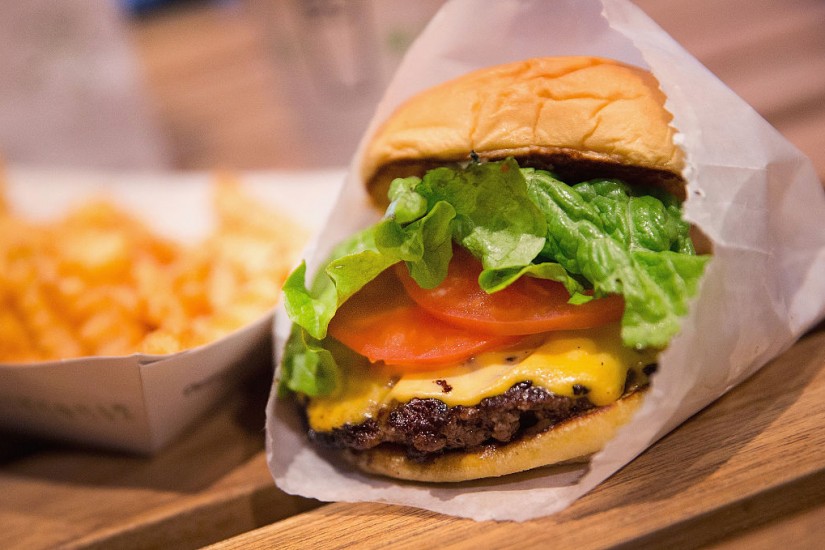The Americanness of the hamburger—Bobby Flay’s “perfect sandwich,” no “the perfect meal”—arises from the Western expansion of the United States in the nineteenth century. This is when economic, geographic, and industrial factors combined to favor cow flesh over pig flesh, and to deliver this cow flesh to growing markets. Eating its sizzling, fatty bulk between buns fulfills the iconic role of the U.S. consumer. As countless historians have shown, consumption itself is an aspect of the narrative of twentieth-century United States.
Being the citizen’s food, the hamburger is celebrated by the citizen—in the form of food critics and culinary historians—with a “gee-whiz” tone. They find in its story a story of progress itself. Hamburger-eating historians of the burger see inevitability in the statistics that show the global reach of the hamburger. They gobble down its status, forwarding their own favorites, and so offering one further salute to the triumphalist rhetoric of the hamburger through personal testimony. They join the stories told by those who prevailed: Ray Kroc (McDonald’s) in his 1977 autobiography, Billy Ingram (White Castle) in a talk in 1964, Jim McLamore (Burger King) in a posthumously published autobiography. With red-blooded tropes, the arc is upward, a teleological logic to the prevailing of the hamburger. Telling the history chronologically becomes a form of obeisance to the success of mass production. For them, the hamburger’s history is juicy, not problematic.
The narrative that grants inevitability to the success of the hamburger is confirmed by the hamburger consumers themselves in their purchases. But let’s pause and recognize that, as the Diner’s Dictionary succinctly states, “the concept of a small cake of minced beef, grilled or fried, is an ancient one,” and the designation “hamburger” is a new name for an old food. Before there were hamburgers, there were individual-portion-sized cutlets. The Oxford Companion to Food identifies the chop—“slices of meat in the size of individual portions”—as a forerunner of hamburger. Like beta versus VHS (predigital technology, if you are wondering), there were different hamburgers, for instance White Castle’s square versus the traditional circle. But these iterations involved the reshaping of animal flesh to a more universal and consistent size with interchangeable parts. It is as American, and industrialized, as Henry Ford’s assembly-line production model.
With our palates influenced by nostalgia, we experiment with our burgers, but often within limit. There remains something that cannot be a burger, depending on who is deciding: hamburger from cows or not, from animal flesh or not, with condiments or not, bun or not.
